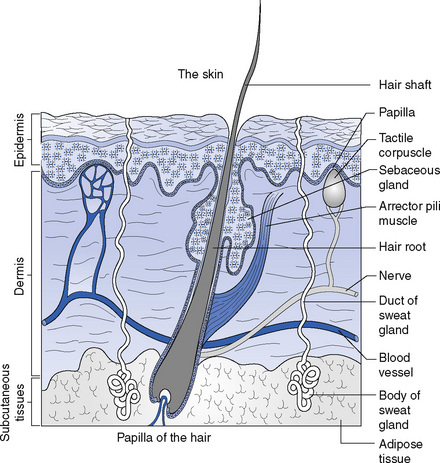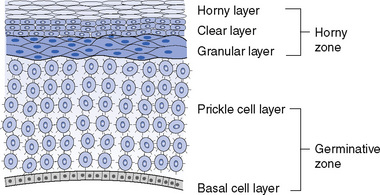23 The skin
Structure of the skin
The epidermis is non-vascular and consists of stratified epithelium (Fig. 23.1). It is very thick, hard and horny on areas such as the palms of the hands and soles of the feet and is much thinner and softer over other parts, such as the trunk and the inner sides of the limbs. The epidermis has two layers or zones: the outer is the horny zone; the inner is the germinative zone (Fig. 23.2). The horny zone has three layers:
1. The horny layer (stratum corneum) is the most superficial layer; the cells are flat and have no nuclei and the protoplasm has been changed into a horny substance called keratin, which is waterproof.
2. The clear layer (stratum lucidum) is composed of cells with clear protoplasm, and some cells have flattened nuclei.
3. The granular layer (stratum granulosum) is the deepest layer and consists of several layers of cells with granular protoplasm and distinct nuclei.
The germinative zone, which is deeper, consists of two layers:
1. The prickle cell layer contains cells of varying shapes, each having short processes, rather like thorns, joining them together; the nuclei are distinct.
< div class='tao-gold-member'>
Only gold members can continue reading. Log In or Register to continue
Stay updated, free articles. Join our Telegram channel

Full access? Get Clinical Tree




